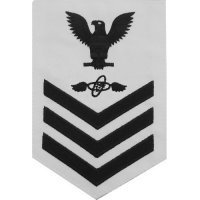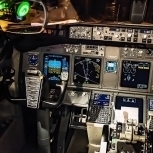

chiswick72
Members-
Content Count
840 -
Donations
$0.00 -
Joined
-
Last visited
Community Reputation
145 ExcellentAbout chiswick72
-
Rank
Member
Contact Methods
-
Website URL
http://www.veryquiet.com
-
ICQ
0
Profile Information
-
Gender
Male
-
Location
EBBR
Flight Sim Profile
-
Commercial Member
No
-
Online Flight Organization Membership
VATSIM
-
Virtual Airlines
No
Recent Profile Visitors
4,571 profile views
-
UrgentSiesta started following chiswick72
-
Thanks Roi ! Glad you noticed the new takeoff sounds ...... More sound improvements coming in the next update .... coming soon! 😀
-
If your problem is that after takeoff the engines go past max power into the red zone then the solution is easy ...... It is MSFS that is the culprit! Goto Options > Assistance Options > Piloting .... and make sure everything is OFF.
-
Glad I could be of assistance! Funnily it happened to me before beta testing began .... I lived with it for two weeks thinking its a known issue, so didn't bring it up with the team. Then Beta 1 came out and while still happening to me, no one in the Beta team were reporting this, so I finally asked one of the Devs and he was like ... you need to top her up!!! I was WOW really? It's amazing that this sort of functional depth was built into this incredible machine!
-
Headphone simulation should always be OFF - it is a terrible feature - all it does is activate various filters and sound processing supposedly to improve the headphone sound experience. But with the 737 it messes up all the cockpit engine sounds in a bad way - so bad that it feels like the sound guy didn't do his job right! Unfortunately seeing a lot of Youtube videos like that and of course it sounds awful!
-
Thanks for the comments guys!
-
PMDG 737-700 loud ELEC pumps
chiswick72 replied to HierIstKlaus's topic in Microsoft Flight Simulator (2020)
Rhett - indeed! I have a feeling that all sound sliders are not set to 100. -
PMDG 737-700 loud ELEC pumps
chiswick72 replied to HierIstKlaus's topic in Microsoft Flight Simulator (2020)
Hey! That shouldnt happen! Have a look at the two screenshots here - make sure all of the settings in red are set then restart MSFS. Then report back to see if it helped! https://forum.pmdg.com/forum/main-forum/pmdg-737-for-msfs/180056-no-sound-with-new-737?p=180307#post180307 -
Thanks Phil!
-
Bill - Hmm - The wind sounds should be loud - please refer to my link in this post that takes you to the recommended sound settings for the best sound experience, especially the two config settings of Headphone Simulation and Spatial Sound = OFF. We have FIVE different wind sound layers implemented in this aircraft!!!!! Now - if you followed my recommended settings and still you feel the wind sounds are not loud enough, then its a simple matter of turning down the "Engine", "Cockpit" and "Miscellaneous" MSFS sound sliders to relatively increase the wind sounds. Btw, the wind sounds are linked to the "Environment" sound slider.
-
PMDG 737-700 has been released!
chiswick72 replied to abrams_tank's topic in Microsoft Flight Simulator (2020)
Indeed - Please turn off Headphone simulation - the difference is night and day! See here for all recommended sound settings! https://forum.pmdg.com/forum/main-forum/pmdg-737-for-msfs/180056-no-sound-with-new-737 -
Just bare in mind that the MSFS Sound settings need to be setup correctly for optimal sound experience! Especially the two settings related to Headphone simulation and Spatial Sound. I also noticed a lot of videos which didn't have these settings, and hence the sounds didn't sound correct. See here for the settings! https://forum.pmdg.com/forum/main-forum/pmdg-737-for-msfs/180056-no-sound-with-new-737 Thanks!
-
PMDG 737 RELEASE NEXT WEEK!!
chiswick72 replied to rfelger's topic in Microsoft Flight Simulator (2020)
😆 -
PMDG 737 RELEASE NEXT WEEK!!
chiswick72 replied to rfelger's topic in Microsoft Flight Simulator (2020)
Not a hack but a d**k! Anyone can setup a forum account with a similar name and profile pic ...... Just note that Robert always pins his announcements to the top of the forum page - anywhere else is straight away dodgy! -
PMDG 737 RELEASE NEXT WEEK!!
chiswick72 replied to rfelger's topic in Microsoft Flight Simulator (2020)
Thank you very very much Steve for your kind words!! We finally got there after many many long days of work and continuous improvements!! Your contribution was very appreciated and very helpful!!! Thanks to you and the rest of the team, we've got a soundset which is easily the best we have ever made in our entire history! I can't wait for everyone to hear it for themselves!!!! 😀 And thank you too David! I'll copy from a quote made recently on this forum .... "I expect everyone here to be flying the 737 in hours, not days." 😆 -
PMDG 737 RELEASE NEXT WEEK!!
chiswick72 replied to rfelger's topic in Microsoft Flight Simulator (2020)
Simon, Have a listen to the demo I posted above, the sounds you are hearing at the current wing views are already using internal sounds! So there is no waiting needed for the sounds! As you mentioned, it has been a nightmare trying to make sounds for the wing views in FSX and P3D because they are all using outside sounds - we don't have that problem anymore in MSFS as it is up to the developer to choose internal or external sounds in the cabin views via a simple config setting. Of course, we have already set internal sounds for all our wing views - you can notice, no more high pitch frequencies (outside sounds) in all our of wing views. The sounds that are high pitched are the packs!






